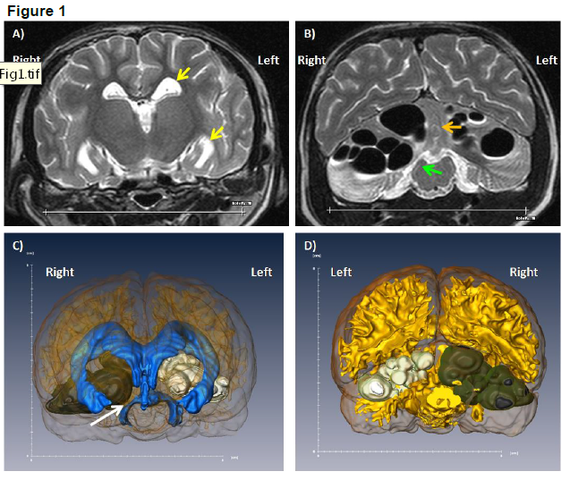Have you ever wondered what it may be like to get inside the head of an animal? No really, to understand how an animal's brain works; ever wonder?
Over the years I have had the opportunity to help with quite a number of animals that have had their heads examined - literally. I've looked inside the blowholes of countless dolphins and whales with an endoscope. I've conducted electroencephalograms (EEGs) on seals and sea lions. I've taken many, many a dolphin and sea lion to a CT, PET or MRI scanner for advanced imaging. In each of these cases the intention was to better understand how the animals' brains work. And to understand things that might be interfering with them working properly.
One of the most amazing examples was a study that resulted in a recent paper published in the preeminent journal Science that looked at Domoic acid (DA), a naturally occurring neurotoxin that is found in algae blooms and can be known to harm marine animals. As a co-author and veterinarian, I had a small role in the study to provide care to the animals that were examined, specifically California sea lions and support to them while they were under anesthesia undergoing advanced medical imaging like CT and functional MRI scans of their brains. The findings have not only extended a rare glimpse into the inner workings of the marvelously complex brains of California sea lions but have shown that these animals in the wild are often suffering from brain damage due to exposure to toxins produced by algae in the oceans. Algae that probably bloom as a result of some human activity not completely figured out yet.
From your own experiences trying to decide what someone else was thinking you can probably imagine just how hard it is to really understand what is going on in another's brain, let alone another species. In fact in his recent book, Mindwise, Dr. Nick Epely of the University of Chicago shows convincingly that as a species we think we are way better at predicting what someone else is thinking than we actually are. We have a lot to learn.
What we have learned from studying the brains of other animals, particularly marine mammals, is astounding. They sleep with one-half of their brains at a time. They can stay vigilant for days on end and detect a slight change in noises presented to them even amidst a background of distracting 'white noise'. They process acoustic signals far, far better than any machine or computer humanity has come up with and, they display and amazing propensity for brain plasticity. They have the phenomenal ability to overcome damage in the brain.
I remember a patient, a two-year old sea lion that was born with a brain tumor which replaced half of the normal brain. One hemisphere was not present; instead there was a blob of tumor pushing everything in the skull to one side. In spite of this, the animal appeared normal in all respects until one day he had a seizure. It was when trying to figure out why he had the seizure that we found out he had the tumor. For that animal the tumor eventually got too big and the brain could not function any longer but it was unbelievable how well he did as long as he did. I've also seen two sea lions with gas bubbles in their brains, big empty spaces with air where the brain should be. And yet, it took a trained eye to recognize the subtle changes that resulted from the damage. Both of these animals were intensively studied with advanced imaging and tests of learning and memory, the same as those described in the Science paper, to search for any clues as to how their amazing brains function. One of these two animals still lives at an Association for Zoos and Aquariums (AZA) accredited zoo. It still takes a trained eye to notice anything unusual about him and the sea lion is still the subject of study to help us answer just how he compensates for such a defect and if that compensation changes over time.
If we can figure out just how these incredible animals cope with life at sea and how they cope with damage to their brains just think about what that may mean for us. Not only will we be better able to care for them wherever they live but we may be able to apply their secrets to some real human problems too. Imagine figuring out how these animals hold their breath for as long as they do. How they deal with blood oxygen levels so low a person would be unconscious. How they can stay awake and aware for so long without rest. How they create images in their minds eye with sound energy alone. It's mind boggling.
Bill Van Bonn, DVM, is Shedd Aquarium's vice president of animal health. With more than 25 years of clinical veterinary experience, Dr. Van Bonn strengthens the aquarium's established animal care and health expertise, overseeing its diverse aquatic medicine initiatives as well as furthering innovative veterinary science at Shedd. Dr. Van Bonn specializes in preventive medicine and enhanced clinical veterinary services for aquatic animals, with a focus on marine mammals. At Shedd, he focuses on providing top-quality care and applying his knowledge of animal health to conservation of their counterparts in the wild.
